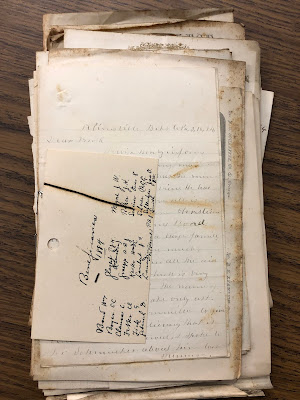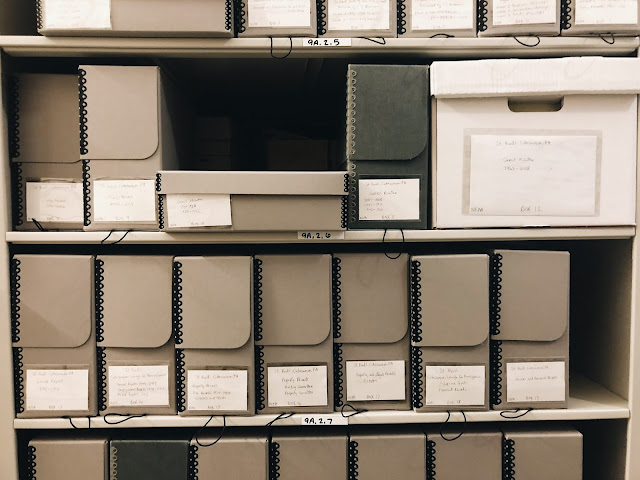Conservation: Preserving Archival Materials
Over the past couple of weeks on our social media, I have been highlighting different ‘spooky’ issues archivists deal with as some light-hearted Halloween-related material. Despite the levity, preservation and conservation are important and serious topics. So what is preservation and conservation?
Preservation vs. Conservation
Preservation is the process of saving an item of value from being destroyed through damage or decay, and conservation covers all of the steps (like examining, documenting, treating, etc.) towards preserving these valuable items. This is very important to archives, because a lot of materials being held are usually rare if not totally one-of-a-kind, and therefore if they are left to deteriorate, which is very easy for paper materials, then the information can be lost forever.
In this blog post, I will be discussing some of the most common issues that make preserving archival materials more difficult and the conservation solutions to help minimize further damage.
Environmental Issues
Before even getting to the archival materials themselves, there are some environmental issues that can determine the fate of conservation. First is a very obvious issue: bugs and pests, because of course no one wants them inside in the first place. Despite being an annoyance, they also can damage paper materials. Things like silverfish and bookworms (yes, they are a real type of bug and not just a term for a person who loves to read!) can eat away at paper materials, therefore making them more fragile and more likely to deteriorate.Paper Issues
As highlighted through our recent social media posts, paper materials can face issues with ink, metal fasteners, or even contact with other paper materials. Unfortunately, when it comes to ink and depending on the specific issue, there is no way to provide conservation measures. For example, if the composition of the ink used is not stable, there is no way to keep it from deteriorating. Really, the only solution to save the information is to transcribe it or make some copy, whether it be a printed facsimile or a digital scan.Metal fasteners and rubber bands, on the other hand, are a lot easier to deal with: all that has to be done is remove them as soon as possible. Instead, archival paper, folders or boxes should be used to separate and/or group materials. These special materials have a certain pH (or acidity) level that will not react with the documents, and are therefore preferred. Similarly, these items can be used to separate documents with different pH levels (i.e. letters from newspaper clippings) to prevent chemical staining.
If staining or foxing, a specific type of discoloration of a paper material with brown spots, does occur, it is possible to reverse it, but it is time consuming and could potentially do more damage. To erase these unwanted markings, the pages can be ‘bleached’ in a chemical solution, but the downside is this could also damage the paper or ink further.
Finally, paper products can easily be folded. If left folded for long enough, especially for documents that are already structurally fragile, the folds could lead to breaking. Though there are archival ways to tape ripped documents or repair holes from metal fasteners or bugs, it can only be done so much.
Preservation Check-list
- Remove all metal fasteners and rubber bands, swapping them out for archival paper, folders, and boxes.
- Another solution is mylaring each individual page (encapsulating them in heat-resistant plastic sheets).
- Ideally, boxes for books especially should be custom-made for each item to prevent movement, but standard archival boxes can still be used.
- Flatten lose documents that have folds.
- Make sure all items are carefully handled.
- If necessary, use folders and boxes to make handling and shelving easier.
- Never force a spine open or a document into its container.
- Use proper book supports when available to prop up the spine at the right angle.
- Use book weights to keep the book open to your desired page.
- Monitor the environment
- Lighting
- Humidity and temperature
- Bugs and other pests
- If items have mold, it can be gently removed using a soft-bristled brush.
- For any severe damage, it is best to consult with a professional paper and book conservator to see what steps, if any, can be taken to preserve the item.





Comments
Post a Comment